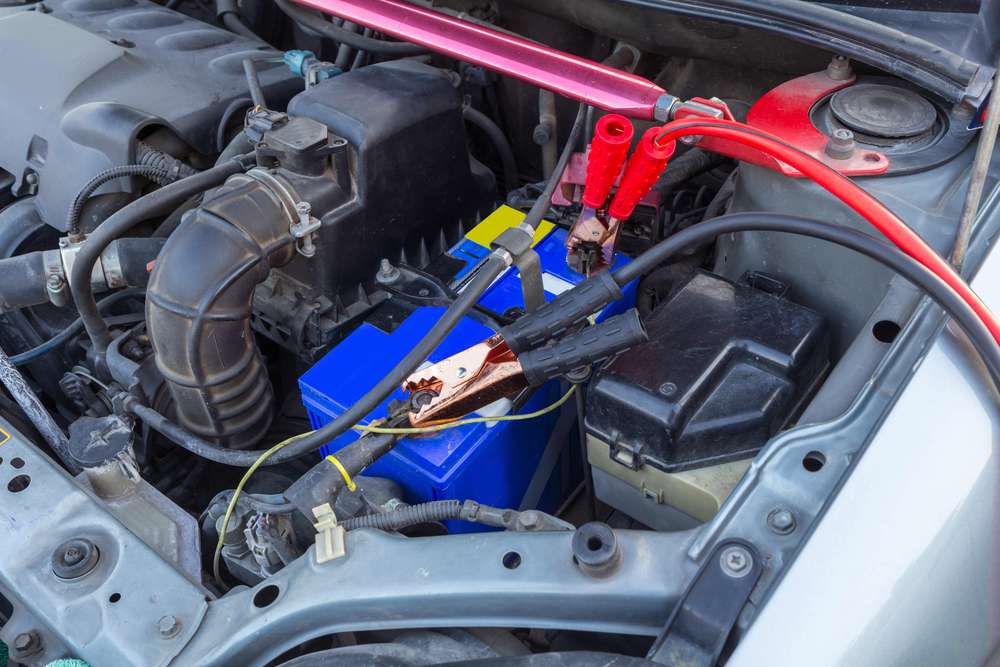Each and every driver must be able to jump-start a car battery.
Similar to replacing a flat, jumping your car is not something that is done frequently or at a convenient moment. It simply takes a short amount of time and a little bit of understanding to jump-start a car. You can start driving again in a short while.
Jumper cables, also known as booster cables, are required in order to connect the dead battery in your car to a fully charged battery in another car in order to jump-start it. It’s a good idea to keep some sturdy wires and other roadside emergency items in your car’s trunk.
Continue reading to find out how to jump-start a car using these techniques.
Set the booster car in place.
A fully charged vehicle should be parked next to the one with the depleted battery. The vehicles may be parked bumper to bumper or side by side. The batteries must be reachable by the jumper cables, thus they must be close enough.
Both vehicles’ ignitions should be turned off and the keys removed. The emergency brakes should be engaged on both vehicles. Turn off all accessories, including the radio, lights, and climate control.
Batteries are located underneath the hood of most gasoline-powered vehicles. However, the battery is typically found in the trunk or under the back seat of other vehicles. The excellent battery in the car should be placed in the proper position. Consult the owner’s manual if you are unsure of the battery’s location.
Track down the battery terminals.
Lift the car hoods to access the batteries. An automobile battery has positive (+) and negative (-) terminals. Sometimes the battery connections are hidden, and remote metal posts are installed to allow for quick jump starts or battery boosters. The positive terminal is frequently identified by a red cap. For terminal locations, refer to the vehicle’s manual as necessary.
The terminals should not have any corrosion. If the posts appear to be coated with a white or greenish substance, remove it using a wire brush, aluminum foil, or something other than your bare hands. The rusting might make your skin itch.
Do not attempt to jump-start a battery that is leaking or damaged.
Put the jumper cables in place.
Jumper cables have two red and black spring-loaded clamps on each end. Red clamps secure positive battery connections, while black clamps are used for negative posts or grounding. The four clamps need to be firmly fastened and in the right sequence. A bad connection could harm the vehicle’s electrical system or cause property damage.
Avoid letting the metal clamps and the batteries make contact while you’re attaching them.
- First, fasten a RED clamp to the positive terminal of the DEAD battery.
- Next, connect the RED clamp on the other end of the cables to the positive terminal of the BOOSTER battery.
- Next, attach the BLACK clamp to the negative terminal of the BOOSTER battery.
- Last but not least, fasten the BLACK clamp to the negative terminal of the DEAD battery or a bare metal fastener or bracket on the car’s engine. In some models, a grounding bolt is placed specifically for this purpose.
Restart the vehicle
Ensure that no moving engine parts are near the connected booster wires. Start the car’s engine to turn on the generator.
Start the car on the low battery after that. You might need to wait a few minutes if the engine doesn’t start right away so that the battery can charge up sufficiently. This might happen more quickly if the booster vehicle’s idle speed is increased.
Note: Finding a dead car battery is never convenient, and bad weather can make matters worse. It’s safe to jump a car in the rain if you’re concerned about doing so. The vehicle battery’s voltage isn’t high enough to make the process any riskier than jump-starting on a dry day, even with the addition of moisture.
Take out the jumper cables
Disconnect the jumper cables in the opposite direction from how they were attached while the engine of the jump-started vehicle is idle and smooth. When attaching and detaching metal clamps from battery connections, be sure that they never touch.
The jumped car’s negative clamp should be disconnected.
Next, remove the booster car’s negative clip.
After that, unplug the booster car’s positive clamp.
The positive clamp from the jumped automobile should then be unplugged and removed.
LINKED POST: 10 Car Repairs That Increase Value
Drive the Jumped Vehicle
Close the car’s bonnet after returning the safety cords to your emergency supply bag. Then, in order to give the alternator time to recharge the jump-started battery, drive the car for at least 20 minutes.
When you shut off the engine, make sure to park the car somewhere open and secure in case it requires a jump again. If the battery does require another jump, its state may be worsening, particularly if it is older than a few years.
The car battery can be diagnostically checked at many auto parts outlets that sell batteries to see whether a replacement is required.
Conclusion
For any other problems your vehicle may have that you can’t fix yourself, make sure to visit or contact us at A1 Quality Repair for top-tier service!
